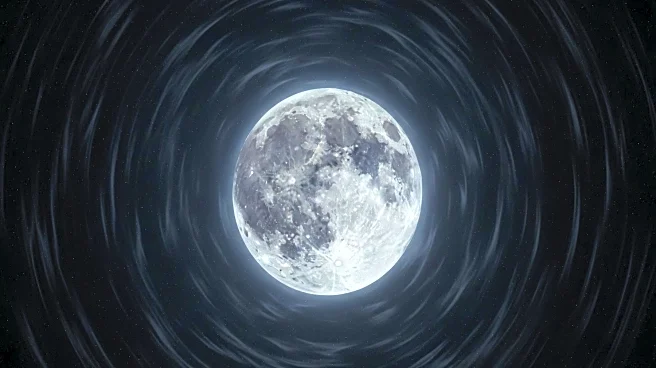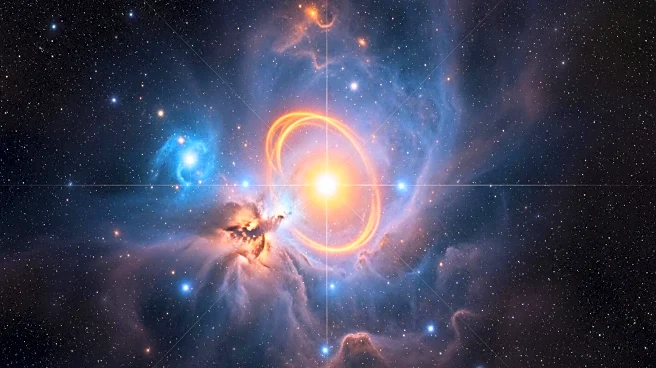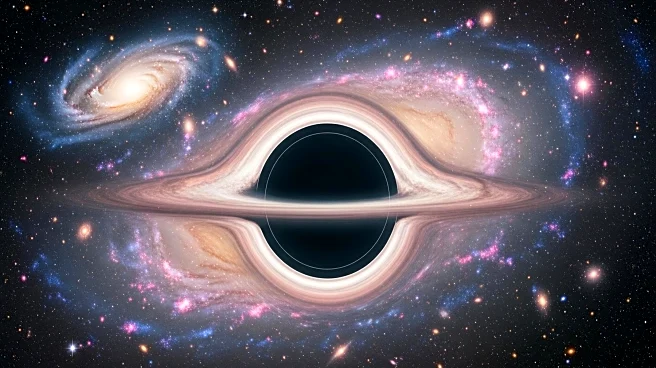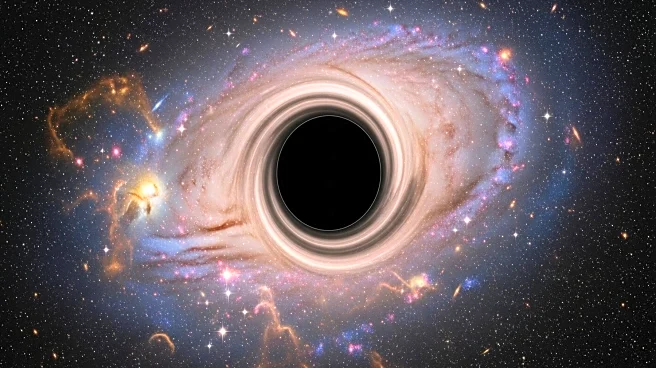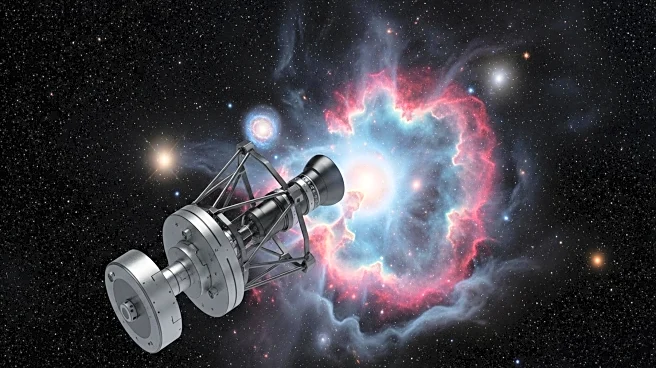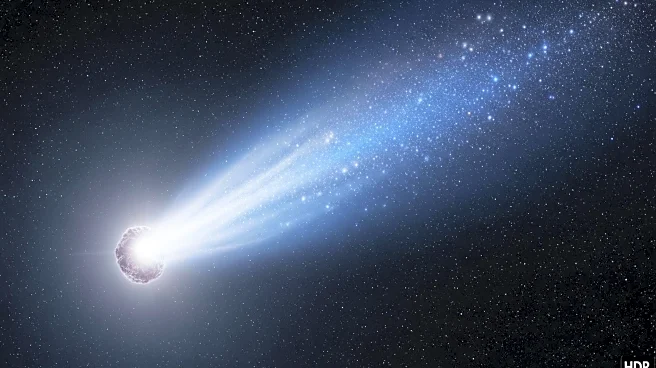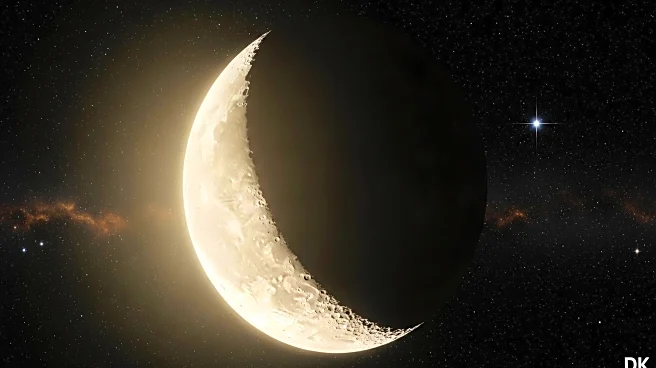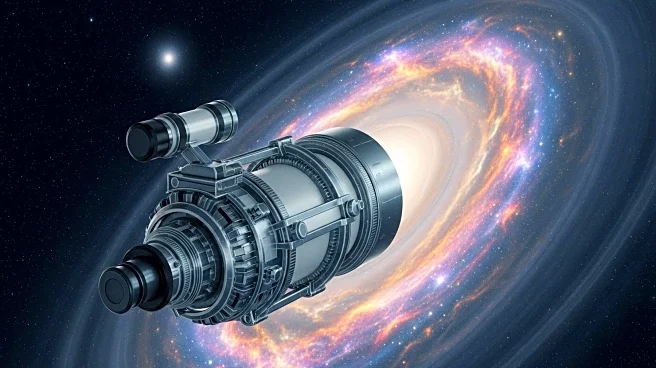What is the story about?
What's Happening?
Recent observations using the James Webb Space Telescope indicate that two of Pluto's midsize moons, Nix and Hydra, may be composed of material from Charon's interior. This discovery suggests that the moons were formed from debris ejected during a collision that created Pluto and Charon. The research, presented by planetary scientist Brian Holler, highlights the unique surface composition of these moons, which includes reddish material likely containing carbon. This finding challenges previous classifications of trans-Neptunian objects and provides new insights into the formation of Pluto's moons.
Why It's Important?
Understanding the composition and formation of Pluto's moons offers significant insights into the processes that shape celestial bodies in the outer solar system. The research could impact theories about moon formation and the dynamics of planetary systems. It also enhances our knowledge of trans-Neptunian objects, which are crucial for understanding the broader context of the solar system's evolution. The findings may influence future studies and missions aimed at exploring these distant regions.
What's Next?
Further observations using the James Webb Space Telescope are planned to delve deeper into the composition of Nix and Hydra. Spectroscopic studies could reveal more about the ammonia-rich material on their surfaces, providing clues about the moons' formation and evolution. Researchers aim to compare these moons with other trans-Neptunian objects to gain a comprehensive understanding of their characteristics and origins.
Beyond the Headlines
The research opens up discussions about the potential for similar processes occurring in other planetary systems, which could lead to the formation of minor satellites. It also raises questions about the long-term stability and evolution of such moons, considering their unique compositions and the impacts of space weathering.
AI Generated Content
Do you find this article useful?
